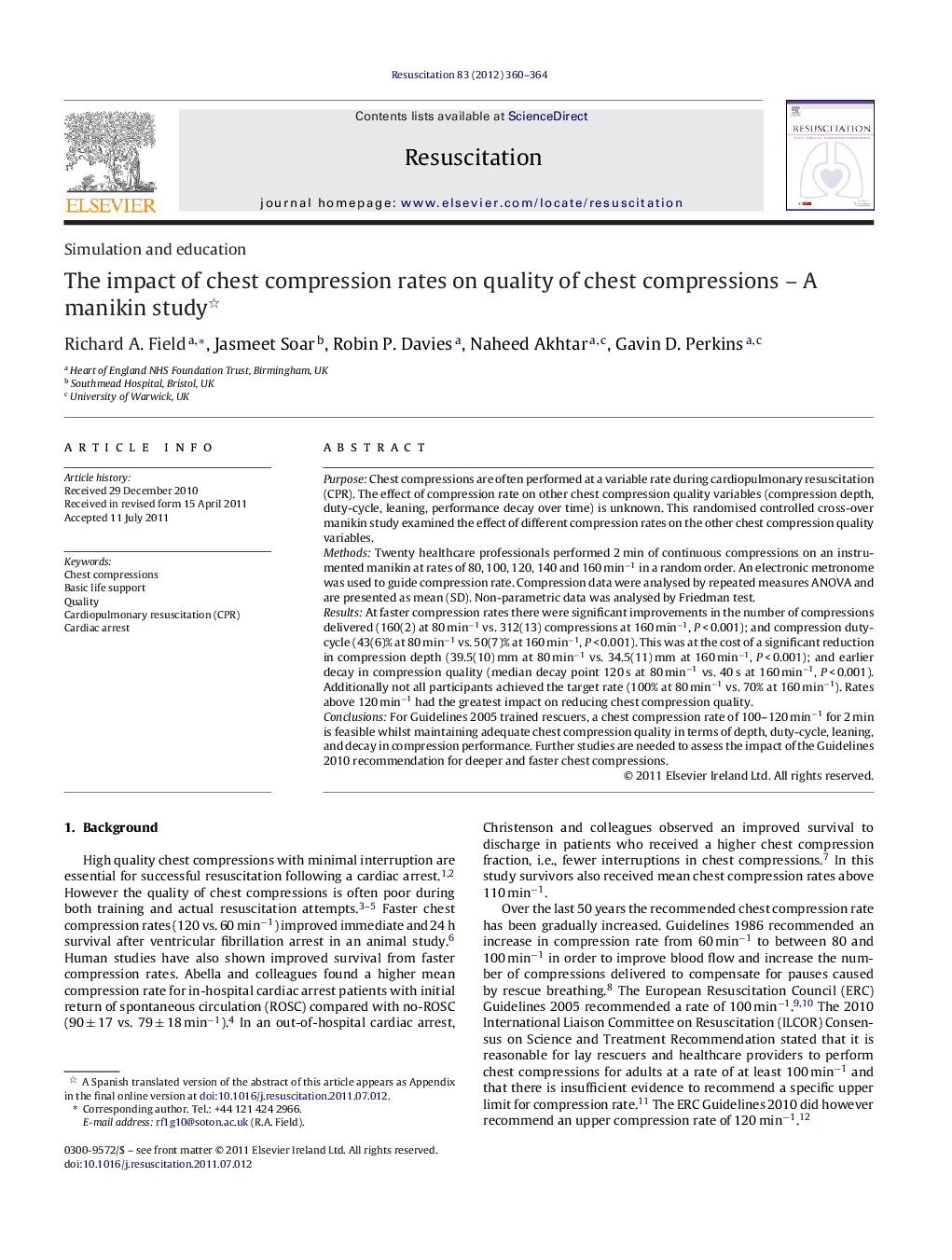| کد مقاله | کد نشریه | سال انتشار | مقاله انگلیسی | نسخه تمام متن |
|---|---|---|---|---|
| 3008441 | 1181457 | 2012 | 5 صفحه PDF | دانلود رایگان |

PurposeChest compressions are often performed at a variable rate during cardiopulmonary resuscitation (CPR). The effect of compression rate on other chest compression quality variables (compression depth, duty-cycle, leaning, performance decay over time) is unknown. This randomised controlled cross-over manikin study examined the effect of different compression rates on the other chest compression quality variables.MethodsTwenty healthcare professionals performed 2 min of continuous compressions on an instrumented manikin at rates of 80, 100, 120, 140 and 160 min−1 in a random order. An electronic metronome was used to guide compression rate. Compression data were analysed by repeated measures ANOVA and are presented as mean (SD). Non-parametric data was analysed by Friedman test.ResultsAt faster compression rates there were significant improvements in the number of compressions delivered (160(2) at 80 min−1 vs. 312(13) compressions at 160 min−1, P < 0.001); and compression duty-cycle (43(6)% at 80 min−1 vs. 50(7)% at 160 min−1, P < 0.001). This was at the cost of a significant reduction in compression depth (39.5(10) mm at 80 min−1 vs. 34.5(11) mm at 160 min−1, P < 0.001); and earlier decay in compression quality (median decay point 120 s at 80 min−1 vs. 40 s at 160 min−1, P < 0.001). Additionally not all participants achieved the target rate (100% at 80 min−1 vs. 70% at 160 min−1). Rates above 120 min−1 had the greatest impact on reducing chest compression quality.ConclusionsFor Guidelines 2005 trained rescuers, a chest compression rate of 100–120 min−1 for 2 min is feasible whilst maintaining adequate chest compression quality in terms of depth, duty-cycle, leaning, and decay in compression performance. Further studies are needed to assess the impact of the Guidelines 2010 recommendation for deeper and faster chest compressions.
Journal: Resuscitation - Volume 83, Issue 3, March 2012, Pages 360–364